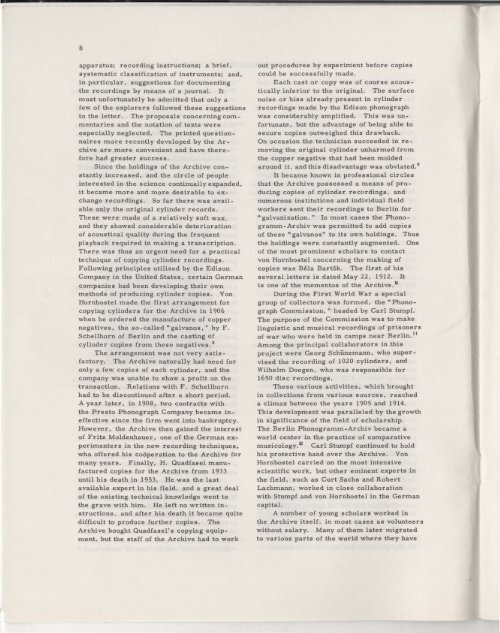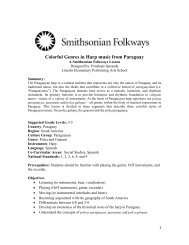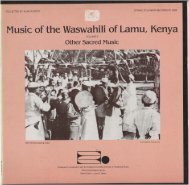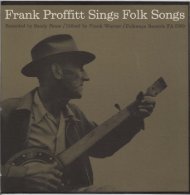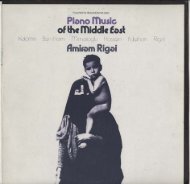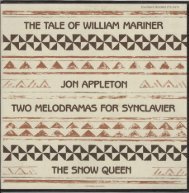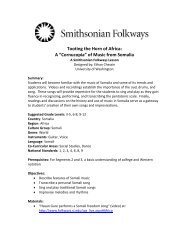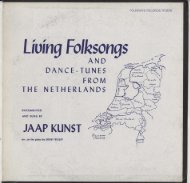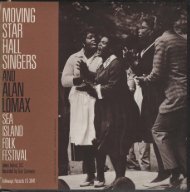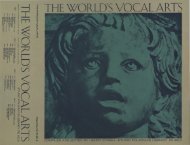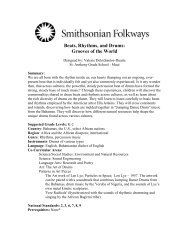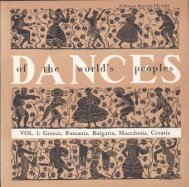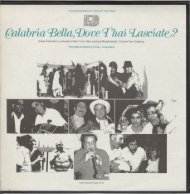FW04175.pdf
FW04175.pdf
FW04175.pdf
Erfolgreiche ePaper selbst erstellen
Machen Sie aus Ihren PDF Publikationen ein blätterbares Flipbook mit unserer einzigartigen Google optimierten e-Paper Software.
8apparatus; recording instructions; a brief,systematic classification of instruments; and,in particular, suggestions for documentingthe recordings by means of a journal. Itmust unfortunately be admitted that only afew of the explorers followed these sugge stionsto the letter. The proposals concerning commentariesand the notation of texts wereespecially neglected. The printed questionnairesmore recently developed by the Archiveare more convenient and have thereforehad greater success.Since the holdings of the Archive constantlyincreased, and the circle of peopleinterested in the science continually expanded,it became more and more desirable to exchangerecordings. So far there was availableonly the original cylinder records.These were made of a relatively soft wax.and they showed considerable deteriorationof acoustical quality during the frequentplayback required in making a transcription.There was thus an urgent need· for a practicaltechnique of copying cylinder recordings.Following principles utilized by the EdisonCompany in the United States, certain Germancompanies had been developing their ownmethods of producing cylinder copies. VonHornbostel made the first arrangement forcopying cylinders for the Archive in 1906when he ordered the manufacture of coppernegatives, the so-called "galvanos," by F.Schellhorn of Berlin and the casting ofcylinder copies from these negatives. 8The arrangement was not very satisfactory.The Archive naturally had need foronly a few copies of each cylinder, and thecompany was unable to show a profit on thetransaction. Relations with F. Schellhornhad to be dis continued after a short period.A year later, in 1908, two contracts withthe Presto Phonograph Company became ineffectivesince the firm went into bankruptcy.However, the Archive then gained the interestof Fritz Moldenhauer, one of the German experimentersin the new recording techniques,who offered his cooperation to the Archive formany years. Finally, H. Quadfasel manufacturedcopies for the Archive from 1933until his death in 1953. He was the lastavailable expert in his field, and a great dealof the existing technical knowledge went tothe grave with him. He left no written instructions, and after his death it became quitedifficult to produce further copies. TheArchive bought Quadfasel's copying equipment,but the staff of the Archive had to workout procedures by experirrient before copiescould be successfully made.Each cast or copy was of cour se acousticallyinferior to the original. The surfacenoise or his s already pre sent in cylinderrecordings made by the Edison phonographwas considerably amplified. This was unfortunate,but the advantage of being able tosecure copies outweighed this drawback.On occasion the technician succeeded in removingthe original cylinder unharmed fromthe copper negative that had been moldedaround it. and this disadvantage was obviated. 9It became known in professional circlesthat the Archive possessed a means of producingcopies of cylinder recordings, andnumerous institutions and individual fieldworkers sent their recordings to Berlin for"galvanization." In most cases the Phonogramm-Archivwas permitted to add copiesof these "galvanos" to its own holdings. Thusthe holdings were constantly augmented. Oneof the most prominent scholars to contactvon Hornbostel concerning the making ofcopies was Bela Bartok. The first of hisseveral letters is dated May 22, 1912. Itis one of the mementos of the Ar chi ve. 10During the First World War a specialgroup of collectors was formed, the "PhonographCommission, ;, headed by Carl Stumpf.The purpose of the Commission was to makelinguistic and musical recordings of prisonersof war who were held in camps near Berlin.llAmong the principal collaborators in thisproject were Georg Schiinemann, who supervisedthe recording of 1020 cylinders, andWilhelm Doegen, who was responsible for1650 disc recordings.These various activities, which broughtin collections from various sources, reacheda climax between the years 1905 and 1914.This development was paralleled by the growthin significance of the field of scholarship.The Berlin Phonogramm-Archiv became aworld center in the practice of comparativemusicology.1Z Carl Stumpf continued to holdhis protective hand over the Archive. VonHornbostel carried on the most intensivescientific work, but other eminent experts inthe field, such as Curt Sachs and RobertLachmann, worked in close collaborationwith Stumpf and von Hornbostel in the Germancapital.A number of young scholars worked inthe Archive itself, in most cases as volunteerswithout salary. Many of them later migratedto various parts of the world where they have


